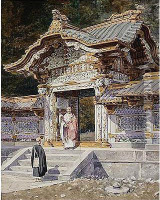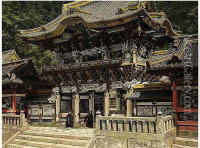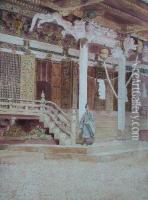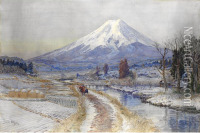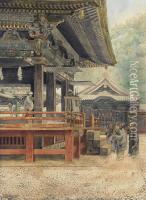Bunsai Ioki Paintings
Bunsai Ioki, also known as Ioki Bunsai, was a distinguished Japanese painter born in 1888, during a period of significant cultural and political transformation in Japan. As Japan opened up to the West, its art scene began to incorporate Western techniques and philosophies, merging them with traditional Japanese aesthetics. Ioki was part of this transformative era in Japanese art, contributing to the development of Nihonga, a style of painting that sought to maintain the integrity of traditional Japanese painting while engaging with the innovations introduced by Western art.
Ioki's work is characterized by its delicate use of color and meticulous attention to detail, elements that are hallmarks of the Nihonga style. He was deeply influenced by the beauty of the natural world, a common theme in traditional Japanese art, and his paintings often feature landscapes, flora, and fauna, rendered with a sensitivity that speaks to his deep connection to his subjects. Despite the influence of Western techniques, Ioki's work retains a distinctly Japanese sensibility, particularly in its use of space and composition, which often reflect the Zen concept of ma, or negative space, giving his paintings a sense of balance and tranquility.
Throughout his career, Ioki was active in the Japanese art community, contributing not only through his artworks but also through his involvement in various art organizations and exhibitions. He was a participant in the revitalization of the Nihonga movement, which sought to ensure the survival and relevance of traditional Japanese painting techniques in a rapidly modernizing world. His efforts, along with those of his contemporaries, helped to establish Nihonga as a vital and dynamic form of artistic expression that continues to influence Japanese art to this day.
Ioki's contributions to the field of Japanese art were recognized in his time, and he received several honors for his work. Today, his paintings can be found in the collections of major museums in Japan and around the world, where they continue to be appreciated for their beauty and historical significance. Bunsai Ioki passed away in 1956, leaving behind a legacy that not only encapsulates the spirit of his time but also continues to inspire future generations of artists.
